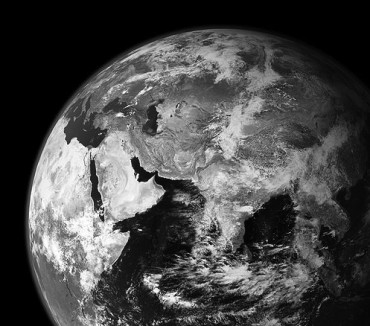
Satellite view, NASA: Eastern hemisphere
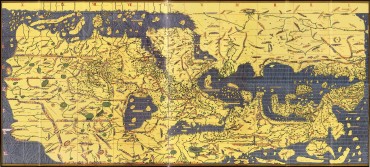
Al Idrisi, Tabula Rogeriana, 1154. The south is up, the Middle East in the middle of the Old World
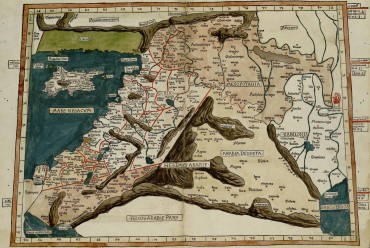
The Holy Land: espressive landforms
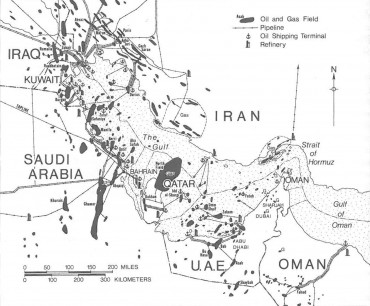
The Gulf: natural riches under the Earth surface
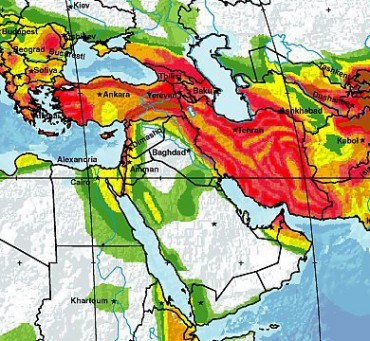
Seismic hazards in the Middle East: seismic activity coincides with political instability
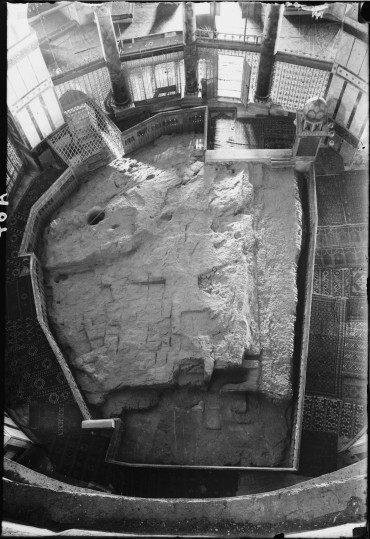
The Foundation stone under the Dome of the Rock in Jerusalem, where many narratives coincide
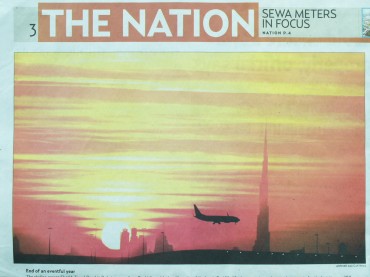
End of an eventful year: a sublime view of the tallest building in the world, from Gulf News, January 1, 2012
4.7.2012 – Issue 6 - Middle East 1 – Ivanišin Krunoslav – Essays
A VIEW FROM ABOVE
by Krunoslav Ivanišin
In Three Stories on Painting and Time Orhan Pamuk traces the distinctive qualities of the Ottoman miniature back to a very remarkable ancestral event: the Mongolian siege of Baghdad of 1258. Architecturally structured way of “depiction of the world from an elevated Godlike position attained by drawing none other than a horizon line” was discovered by a master calligrapher in the sublime view from the top of the minaret, whilst observing the ongoing plunder detached from the agonizing reality.
Beyond the magic- realist literature, an even more detached view from above where Immanuel Kant’s notions of the mathematically and the dynamically sublime meet, offered a sustainable departure point for an architectural research of the vast area stretching from the Libyan desert to the Persian mountains and from the Black and the Mediterranean to the Arabian Sea, testing the limits of architecture as a discipline that controls and shapes the state of things. In his speculation on Kant, Slavoj Žižek, has put the sublime experience into strictly architectural terms: “the sublime is the majesty of nature seen from the inside, through a (real or imagined) window frame- it is the distance provided by the frame which makes the scene sublime”. The digital age has enabled further detachment of the nineteenth century’s Wanderer from the physical reality, opening thus the vast field of the possible sublime experience. The Google Earth application, a sort of microscope with conceptually endless close ups, is among its most radical tools.
What is Middle East depends primarily on the perspective of the observer. The disputed term originates in the meta- language of the Anglo- American intelligence services: the Middle East was right in the middle of the way to the British possessions in India and Indochina. Same in Italian, French and Spanish, it translates into the Near East in German and Slavic languages. Seen from Europe, the Middle East coincides with the Asia Minor, the Outremer, the Levant where the sun is rising, the Morgenland where the day comes from as opposed to the Abendland where it ends; observed from inside with the Mashreq as opposed to the Maghreb, or with the Bilad al Sham beyond or before the national borders and discourses. Where the Middle East is is rather clear: it has been in the middle of the Old World ever since the beginning of history. Today, the Dubai stock exchange happens to be right in the middle between the ones in London and Frankfurt direction west and the ones in Hong Kong and Tokyo direction east.
With its geomorphologic and geopolitical complexities, it was more than just a template in this experiment of observation of natural and cultural forms at a vast spatial envelopment. One mayor topic proved obvious: Its contemporary history is decisively conditioned by its physical shape; the perceivable land- form and the abundance of natural riches underneath. A very special aspect of the observed territories is the radical proximity of the ultimate “cosmic landscape”- the desert- to the sublime monumentality of the growing metropolises. This striking collision of the extremely natural with the extremely artificial magnifies the actual presence of material facts. Often assigned special cultural and mythical properties by humans who have inhabited them by ancient divinities and contemporary heroes, they are parent to the abundance in narratives, from those about the creation of the world to those about the modernization of the globalized human society. In the contemporary context of accelerated time, issues such as “city”, “landscape” and “territory” become radically dynamic while vague notions of “environment” and “sustainability” acquire dramatic proportions.
Recent history has widened the “architectural” idea of the Middle East from that of a petrified place where nothing changes to that of a site of immense opportunities where everything is possible. Places this notion encompasses do not rest in the domain of decent origins of our profession any more. To the contrary, we consider them the sites where its future, exciting possibilities are being tested. Right now!
Download article as PDF

